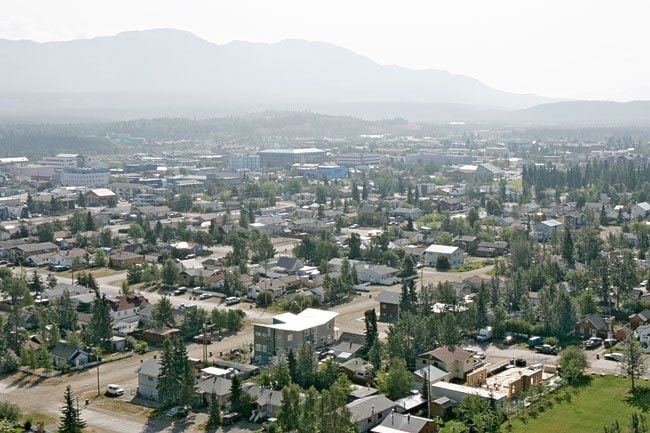Thick hazy smoke can be bad for you, said Premier Dennis Fentie, Health Minister Glenn Hart and other Yukon officials at a Monday morning press conference.
But despite the risks, Yukon health-care services haven’t seen a rise in respiratory cases.
“I wouldn’t say there’s been a marked increase anywhere,” said Brendan Hanley, the Yukon’s chief medical officer of health.
Patients have been showing up at Yukon health centres with respiratory ailments, but not in areas where “there has been really heavy smoke,” he said.
Yukoners with respiratory problems are being encouraged to put down the hiking boots and mountain bikes.
“What to do about it is pretty simple; it’s to stay indoors on the heavy smoke days and to limit exertion,” said Hanley.
“The more physical activity, the more exertion, the more your heart rate and respiratory rate increase, therefore more smoke particles are ingested, therefore the risk increases,” he said.
In smoke-swamped Teslin, residents with respiratory illnesses were being urged to relocate to Whitehorse.
Yukoners without “asthma, lung disease or allergies,” should be fine - although they may find their eyes, noses and throats irritated by the smoke.
Too irritated? Stay inside and “minimize strenuous activity if necessary,” read an official release.
Smoke from fires in the Yukon, Alaska and Russia’s Far East are “veiling the entire Arctic with haze,” reported the forest fire monitoring branch of NASA.
On Friday, NASA captured satellite images of low-lying forest fire smoke drifting east from Alaska to the Yukon.
In Whitehorse, most of the city’s smoky haze is being caused by a 6,000-hectare fire burning on both sides of the Teslin River.
Although dissipating, smoky conditions “can be expected to continue depending on fire activity,” read an update from Yukon Wildland Fire Management.
For all the fires burning in the Yukon, only a handful are posing a threat to human settlements.
The others burn in wilderness areas, where they are being monitored from the air.
Four fires continue to burn on the fringes of Teslin.
Three helicopters, seven Wildland Fire Management firefighters, four fire trucks, and a commander are battling the blaze, which officials have listed as being a priority.
Officials have developed contingency plans should the fires begin to threaten human settlements.
In order to prevent more fires, Wildland Fire Management continues to ask that Yukoners “limit their burning to barbecues and closed-lid stoves.”
Backcountry travel is being discouraged.
Contact Tristin Hopper at
tristinh@yukon-news.com
